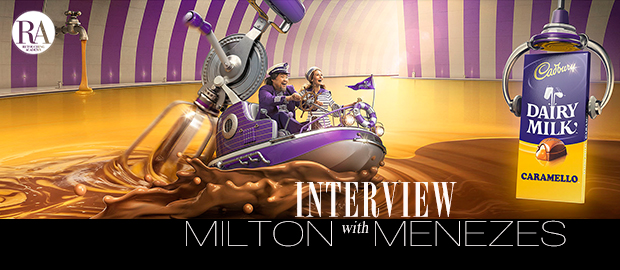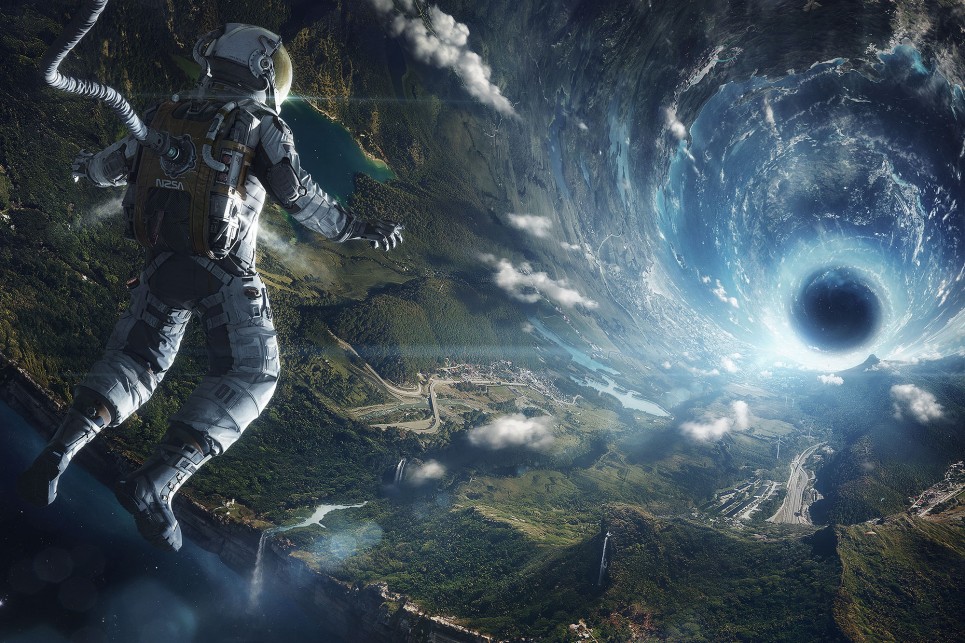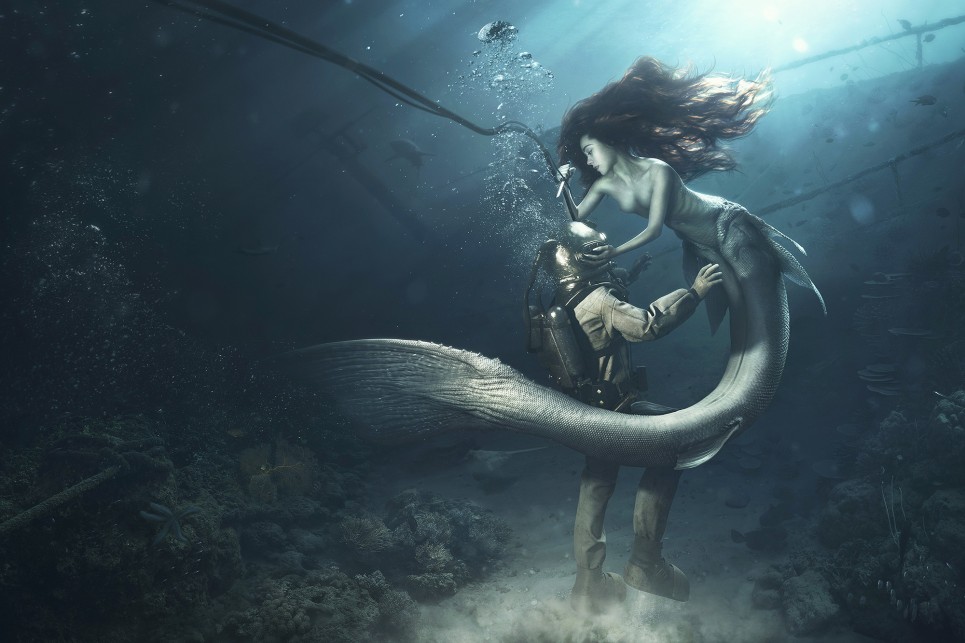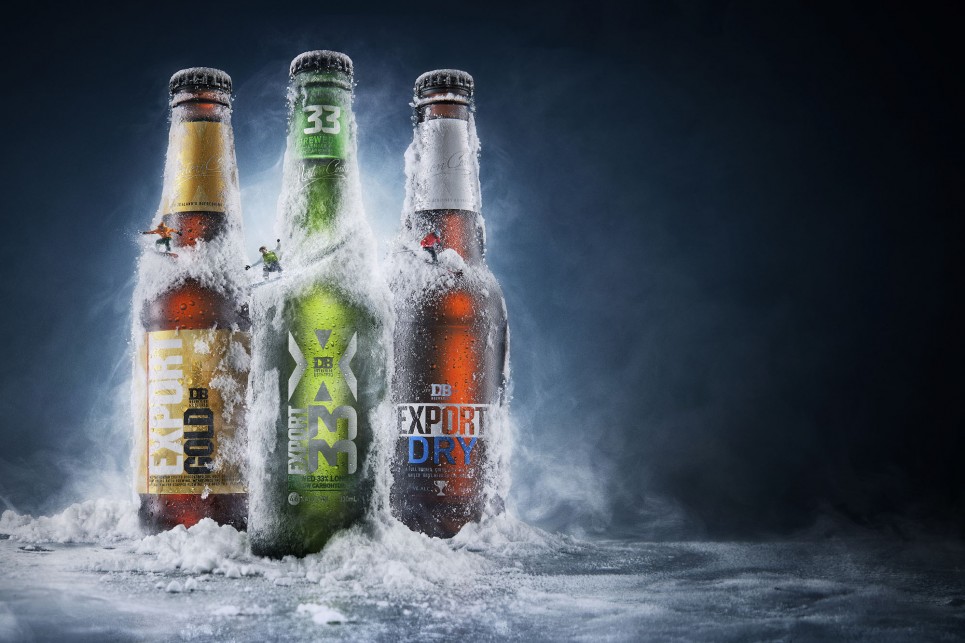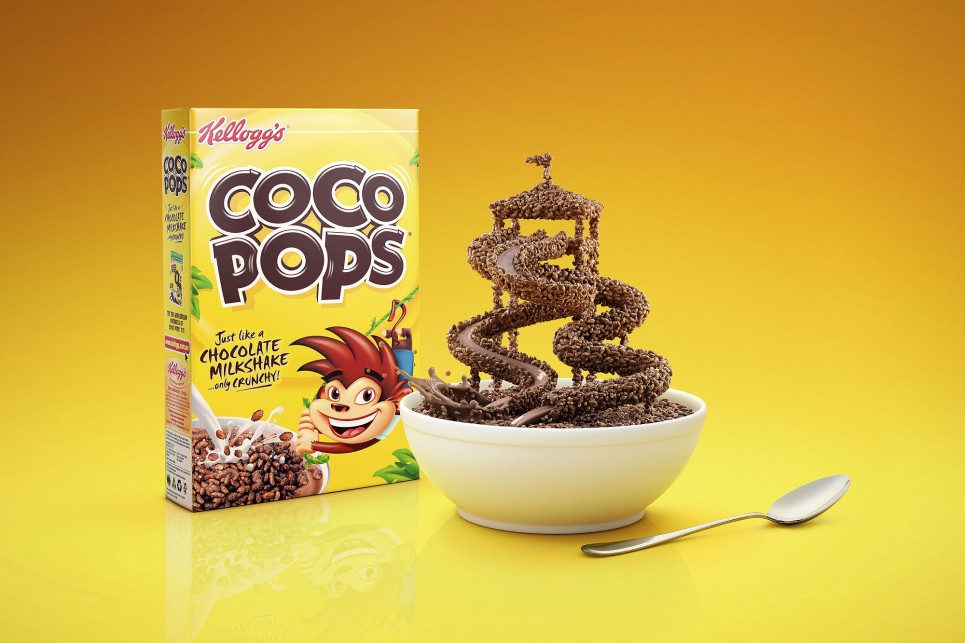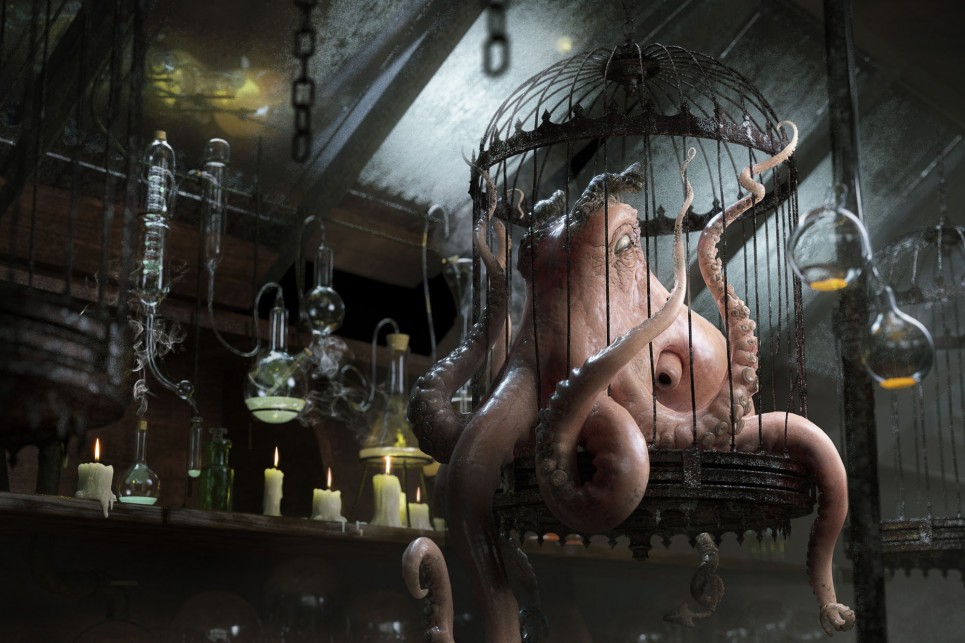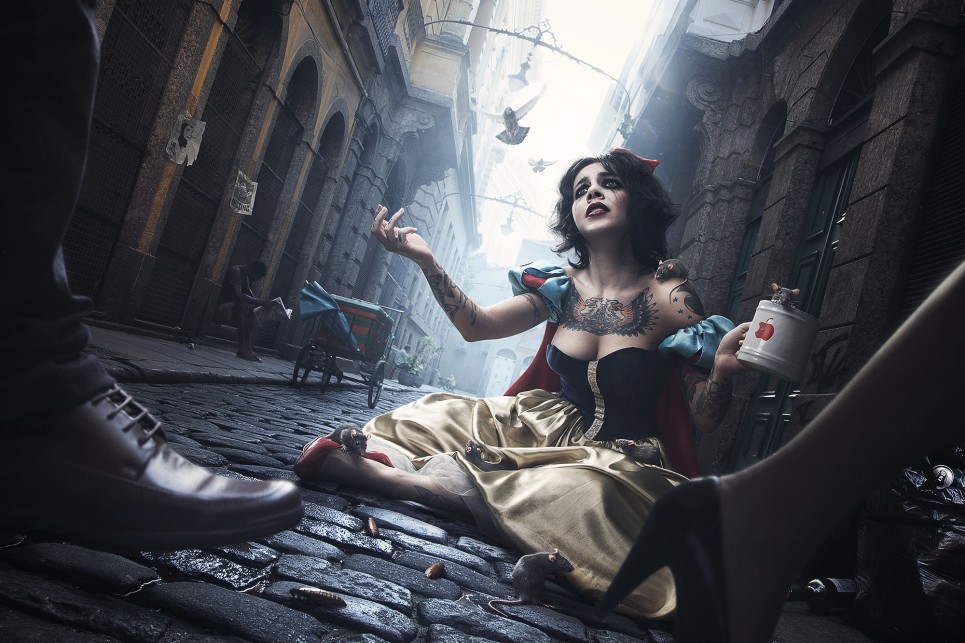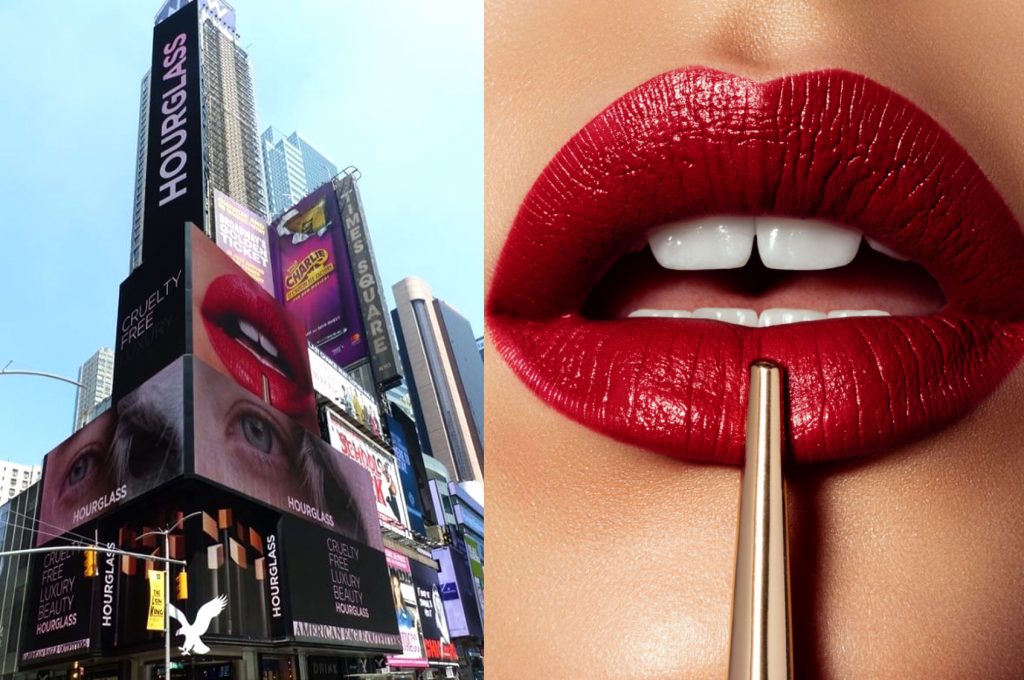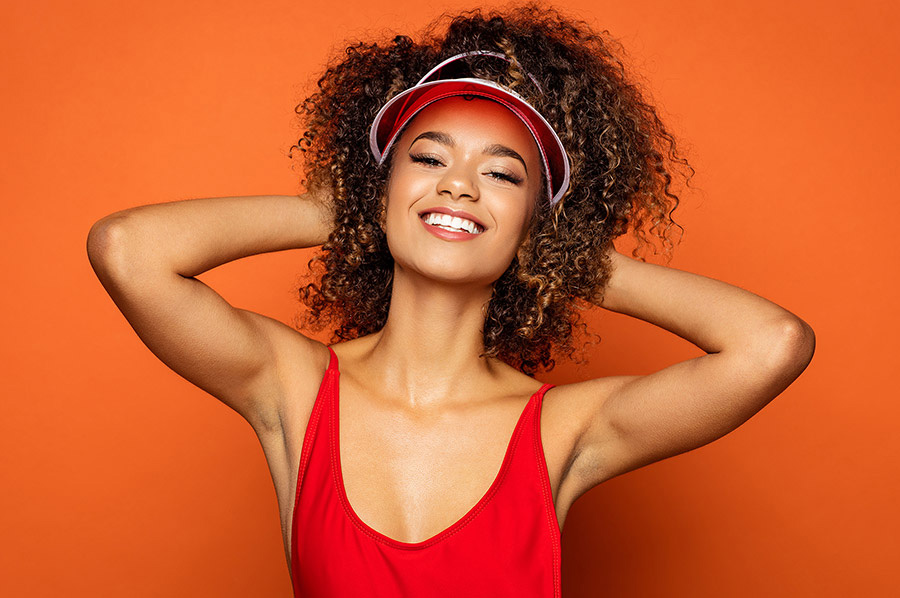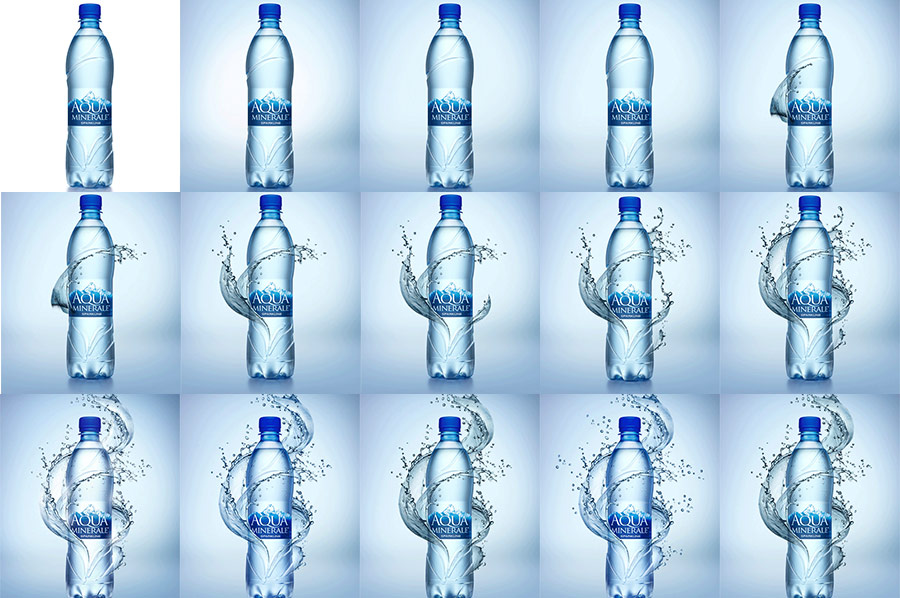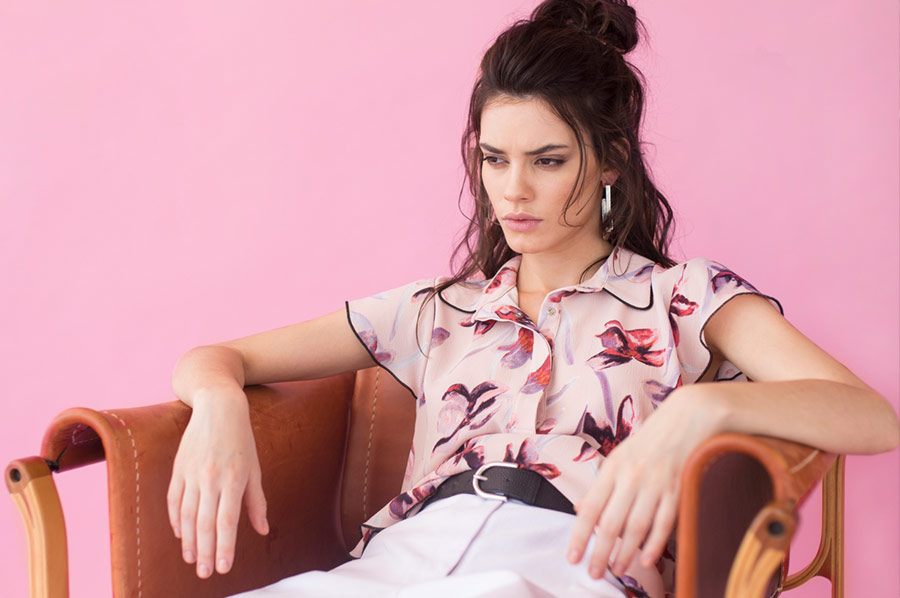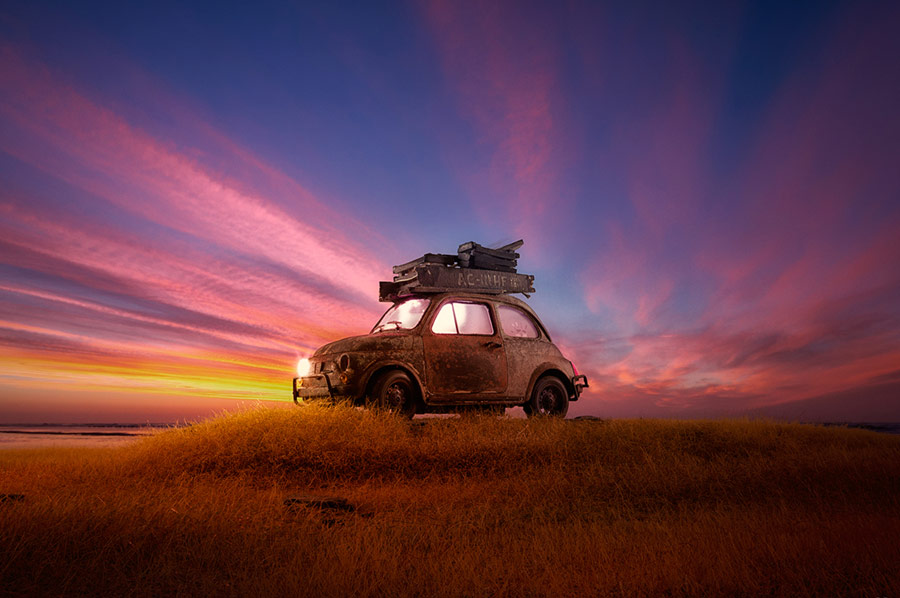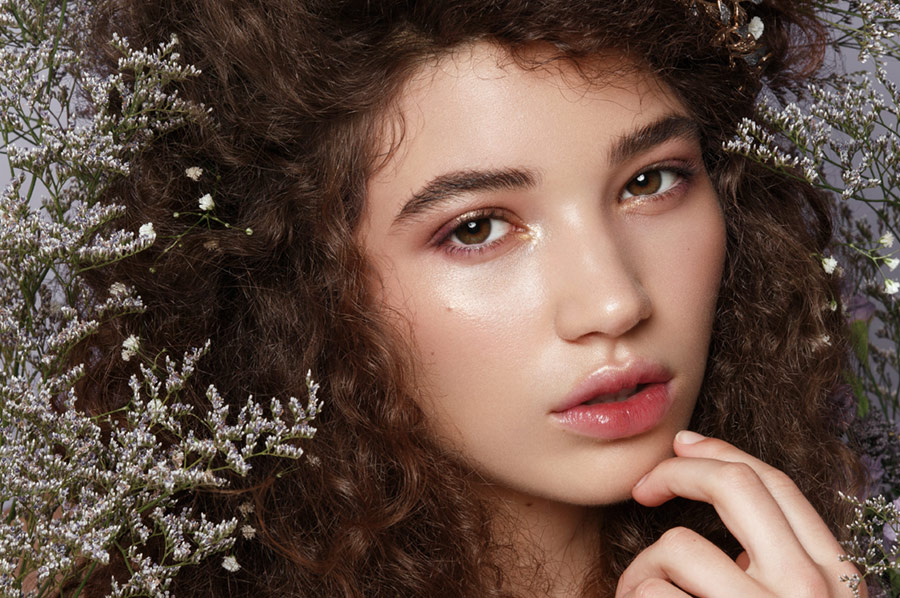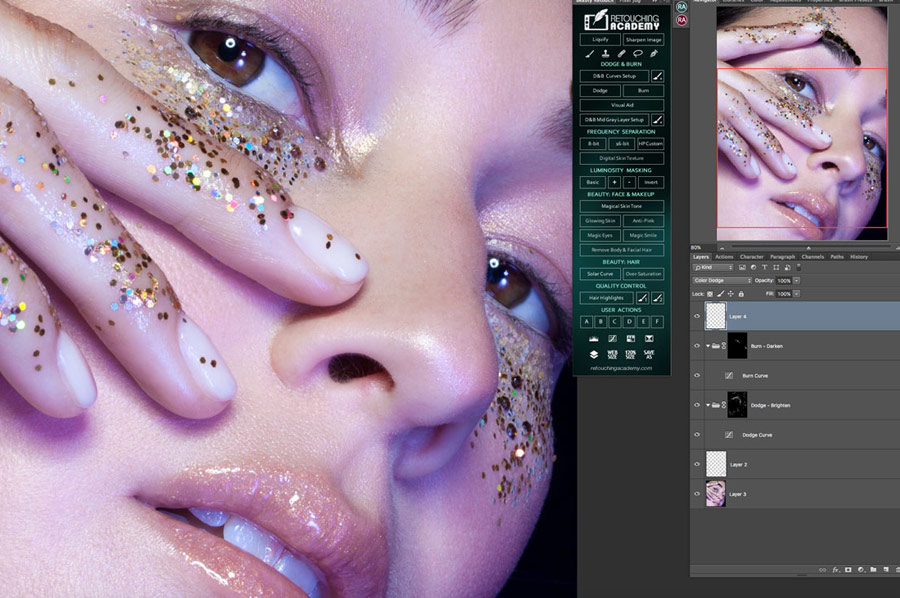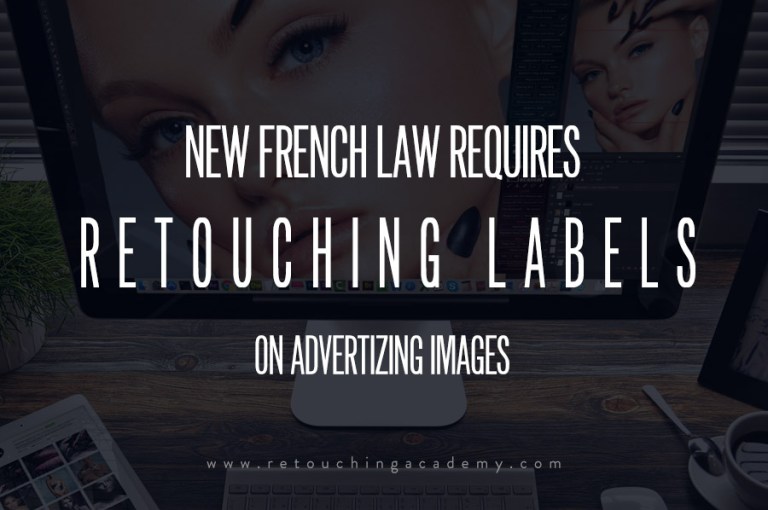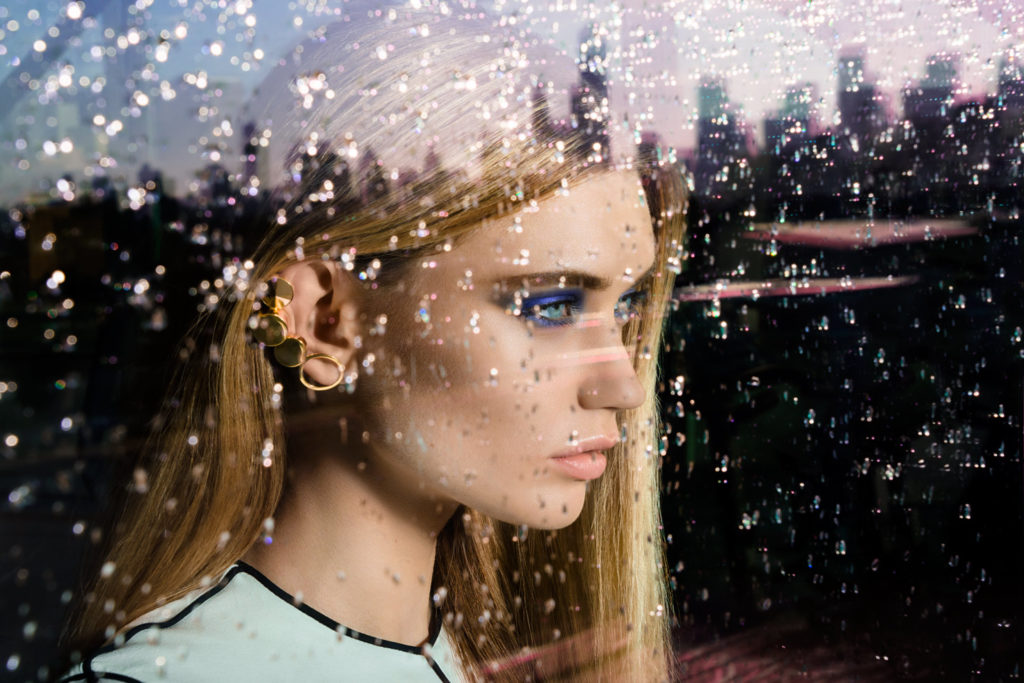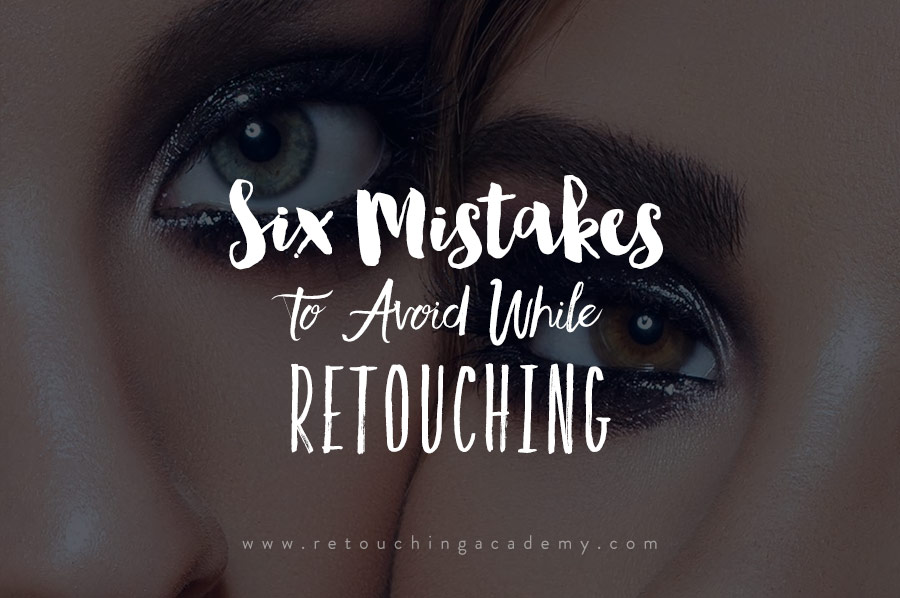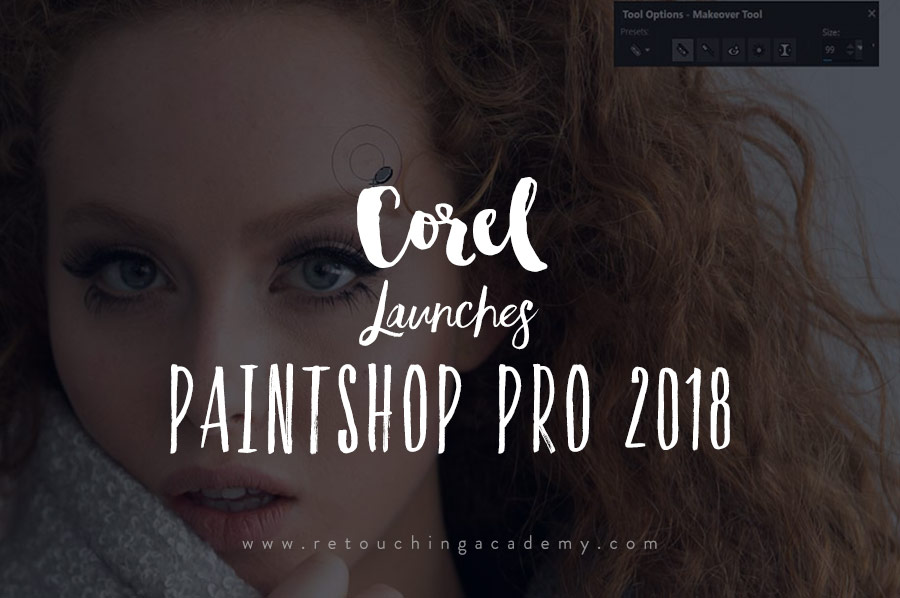This is the fifth in a series of interviews with established digital artists who exemplify another facet of the retouching industry. We hope you find this series both enlightening and informative.
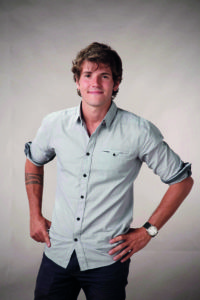 Milton Menezes (www.lightfarmbrasil.com) is a Rio de Janeiro Brazil-based digital artist with 15 years experience in design, art direction, and photography.
Milton Menezes (www.lightfarmbrasil.com) is a Rio de Janeiro Brazil-based digital artist with 15 years experience in design, art direction, and photography.
Milton is the director of Lightfarm Brasil, one of the studios in a growing multinational company specialising in image/content creation for advertising. Lightfarm has studios in New Zealand, Australia, Brazil, and agent representation care of the prestigious Bernstein & Andriulli covering the USA, UK, and China.
Tell us about yourself. How did you become a digital artist?
I guess messing around with Photoshop as a kid. Scanning my drawings to the computer and playing around with them on the earlier versions of Photoshop felt like magic to me back then. This attraction to digital arts led me to choose fine arts when I attended university.
I actually started freelancing as a designer for theatre posters while I used to be an actor here in Brazil. At some point, people told me that I had talent for it and I started to believe that. Since then, I’ve put tons of energy into becoming a professional designer, working at design agencies as a junior designer and later on at ad agencies as a junior art director.
Working at agencies was painful for me because I couldn’t be free artistically on pretty much anything. So I dragged myself to Platinum, possibly the biggest image conception studio in the world back in those days. I learned a lot from those guys and kept on learning at Lightfarm Studios in New Zealand.
For more on this amazing image, please see: www.retouchingacademy.com/the-making-of-the-verge-artwork-by-lightfarm-studios
Do you have any formal training in photography, traditional or digital painting?
Nope, I never had any. To be fair, I had a course once but ended up teaching the teacher. I don’t mean that I was that good, it’s just that the courses in Brazil are really bad. You go for an Advanced Photoshop course and end up covering the basics. I guess the best courses are online, but the true course is challenging yourself.
All of the big challenges I have had, like the astronaut in ‘The Verge’ or the mermaid in ‘Harmful Nature’ are my real courses. I started with the ‘The Verge’ knowing that it would be the hardest piece I’d ever done. I almost quit five times, but I told myself to stay optimistic and just go step-by-step, and it worked for me.
For more on this amazing image, please see: www.retouchingacademy.com/lightfarm-studios-harmful-nature-artwork-and-the-story-behind-it
What three personal qualities have really helped you to become successful in your craft and business?
- Picky as hell with the detail. Everything we do needs to look great from 0-100% zoom. Every detail in the image traps the viewer’s eyes in it. Maybe because I used to be an actor, I try to put myself in other people’s minds in order to please a wider public. I wonder about everything from what my mom would say about my images to what a judge at Cannes would say. Listening to what people say is key.
- Technically organized. You must organize your files and workflow to avoid things getting crazy. This is especially important when you work with a team. Here at Lightfarm, we finally have a standard workflow that I developed. I never had it at any studio where I worked before. Having a workflow set up is pure gold.
- Extremely optimistic. I truly believe you can make whatever you want. I personally like difficult projects with huge challenges, the ones that make our team’s legs shake before doing them, the ones I’m not sure I can make. These are the projects we seek here at Lightfarm.
Changing gears, can you tell us a bit about the background of Lightfarm Studios and how you came to work there?
I used to work at Platinum FMD for six years. After that much time pushing my limits every day, I guess I was feeling comfortable with my technique and skills. I was 25 years old when I decided to travel overseas for the first time. I figured the best way to go would be by doing what I do, so I sent my portfolio to pretty much every studio in the world.
I got good responses in general, but three studios caught my eye in particular. After a month, I got Lightfarm’s response. They asked me if I could do CG as well as Post. I said, “Not at the same level, no.” My roommate at the time, Rafael Vallaperde, was the best CG artist I knew, and still is. For me to travel overseas for the first time with a friend was a much easier option, so Rafael ended up being my businesses partner here at Lightfarm Brasil.
The guys at Lightfarm were really cool and treated us really well. Working at Lightfarm New Zealand was a lot faster and objective compared to working in the Brazilian market. It was a great exercise to do everything quicker and I’m glad that I worked there. With the good relationship we had there, we ended up signing our contract to bring Lightfarm to Brazil.
Lightfarm blends many different facets of image creation, from photography to 3D rendering, and in the process creates truly fantastic composites–everything from the completely believable to the surreal. What style is your favorite?
I love doing surreal stuff in the most realistic way. Above all, I love impact. We get this feeling by working the image assets well, from the angle, composition, depth, and color palette.
What are the key ingredients in creating a believable image?
I guess reference. With a good reference of what you want, you can get what you need. If there’s no reference, well, you need your imagination and creativity.
What types of work do you do most for your clients and who are they (private individuals or companies)? Do you mind working on something that’s not your favorite style? Do you try to shift your workload into the area that you enjoy the most?
We do all types of images. From model shots to car scenes. From realistic pictures to surreal plates. Most of our clients are agencies working for big clients. To build an image is not a cheap job. It’s extremely specific and only a few studios in the world do it really well. You need a lot of background knowledge in illustration, CG, photography and post-production.
How important are personal projects to you? How many do you typically create in a year?
They are the most important thing to me. Paid jobs are cool and make the company grow. Personal jobs are free, but they gives us much more exposure because we are our own clients and so we don’t have boundaries applied to our imagination. It’s the best way to keep ourselves fresh and always facing new challenges.
Do you shoot/create all of the digital assets for your work? If not, what percent mix come from assets you shoot/create versus what your client provides?
We prefer to do everything ourselves on our personal projects, although we can use any suitable assets if possible. It’s normal to get assets from clients or to work with other photographers to help with new shots.
Do you have a fairly typical workflow you follow? Can you share a little about your thought process at each stage from conceptualization to completion?
Every image needs planning. The best way to plan an image is by drawing. CG also helps a lot with getting the right perspective and scale.
The next stage of production depends on the image, if it’s photographic or CG. Each image has different challenges. You can make a CG scene to plan a shot or to guide a stock composition. If the scene is pretty much CG, then it works the same way as shooting. You have lights, a camera, and everything else simulating the shot.
Post-production is essential to blend the assets together. It doesn’t matter if it’s a shot, a render, or stock. Post glues everything together and give style to the image.
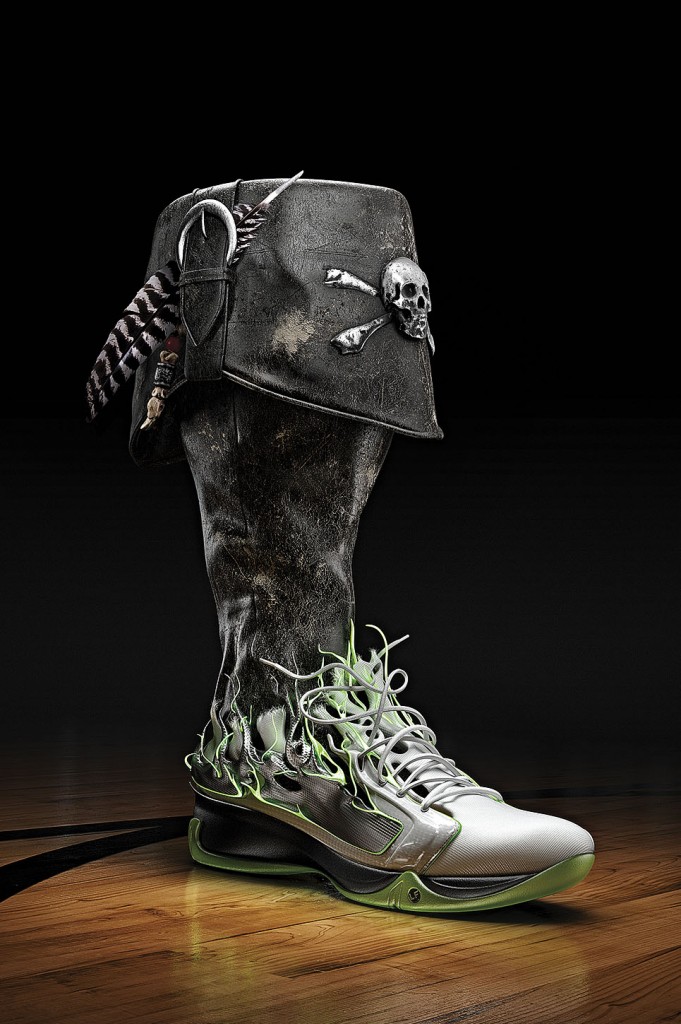 What tends to be the most challenging aspect of creating your digital artwork and what would be the one or two enhancements to your favorite software program that would benefit your workflow the most?
What tends to be the most challenging aspect of creating your digital artwork and what would be the one or two enhancements to your favorite software program that would benefit your workflow the most?
The hardest thing about our work is when we have to work without ideal assets, like when we had to get studio car shots to blend into sunny outdoor scenes. Again, the best way to go would be searching online for similar references. With the right reference in hand, it gets a lot easier to create what you want and the client needs.
I love how Photoshop works and after the Auto Save was added, I would love to see an Auto Clear Cut feature that works by depth of focus or pixel difference.
Lightfarm has created several promotional videos that give people an enticing peak behind the scenes of your amazing creations. The videos themselves are works of art. Can you tell us more about them?
Our videos are an expression of our truthful artistic views. Only a few studios in the world practice this kind of promotion. What started as an exercise, ended up being our greatest marketing strategy. Rafael, my business partner, is a great film editor. His work on video editing makes everything look better and bigger.
When you were starting out, what were your main sources of clients? Where would you recommend that beginning composite artists advertise or promote their services?
In the beginning, I worked as a designer for theatre posters and design agencies, as a photographer at a photo lab, as a junior art director at ad agencies, and finally as a creative retoucher at image conception studios like Platinum and Lightfarm.
I started with a lot of energy getting little money or no money at all. I was so focused on getting in the market before I started climbing the steps for a good salary. It used to be easier to get better pay in small studios because of their need compared with the big studios where everyone wanted to work. After working for years at big studios for less money than I could earn elsewhere, I finally had the experience I needed to open my own studio.
Lightfarm Brazil seemed like the best business option for myself at the time. I feel great to finally be the head of a business at 29 years old. After years of being a rebel artist, it feels great to have partners I can trust and who believe in my crazy ideas.
What advice would you offer to people interested in becoming professional composite artists? What skills and qualities would make it easier for them to succeed?
I guess believe in yourself, study a lot, and never stop learning. Observation is key to building the reference library in your head. Get out from behind the computer and get inspired by the world around you. It’s a huge time-savings to know what worked well for great artists and you can leverage hundreds of years of knowledge in your own artwork.
Try to do better than you did yesterday. Break your own limits. Surround yourself with what inspires you. That’s what we do here. It’s what’s been working for us so far.
Overall interest in and awareness of digital compositing has exploded in recent years; as an artist, where do you see the industry going and are there any specific changes you would like to see happen?
As digital became a reality, impossible productions became possible. There is still a fear of just how real CG can get, but that’s fading away. More and more clients are loving how editable CG is and how past limitations are now expanding exponentially to meet the level of our imagination. I can’t think of something that can’t be done today by digital compositing.
The question is: What is the best/fastest/cheapest way to do what you want done? Sometimes, it doesn’t make sense to spend time showing off our CG skills doing something we could photograph more easily instead, or to shoot something when we could create it faster using CG. As each project has different challenges, we always need to question ourselves before doing anything.
Can you please share your favorite art, motivational, or inspirational quote or piece of advice with our audience?
Have the courage to follow your heart and intuition. I guess it was Steve Jobs who said it. As cliché as it is to quote Steve, he was so right. And every day, there are so many good artists who inspire me just as I hope our work here at Lightfarm Studios inspire other artists who will then inspire us back. Sounds good, doesn’t it?
What’s the most exciting project you’re working on at the moment?
We are working on the Cinderella and Beauty and the Beast images at the moment. The Beauty and the Beast will have a making-of video similar to the ones we did for ‘The Verge’ and ‘Harmful Nature’. These images will be a continuation of the Hunger White sequence. This personal campaign of ours puts the Disney princesses in a modern ruthless reality.
We made Snow White homeless, Cinderella will be a kleptomaniac, and Belle from Beauty and the Beast will be a stripper. The making-of video for Beauty and the Beast will be the last one we create for a while because we will be focusing our energy on making animated movies.
You can see more of Lightfarm Studios’ work and follow them on their:
Website: www.lightfarmbrasil.com
Facebook: www.facebook.com/lightfarmbrasil
Vimeo: https://vimeo.com/lightfarm/


